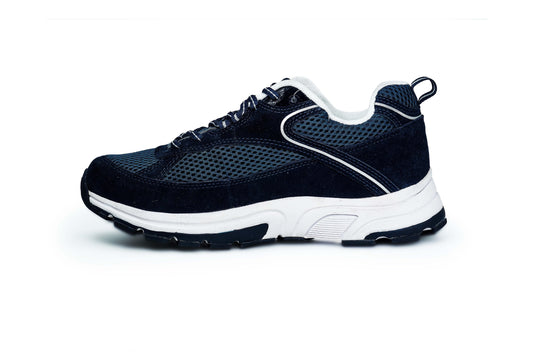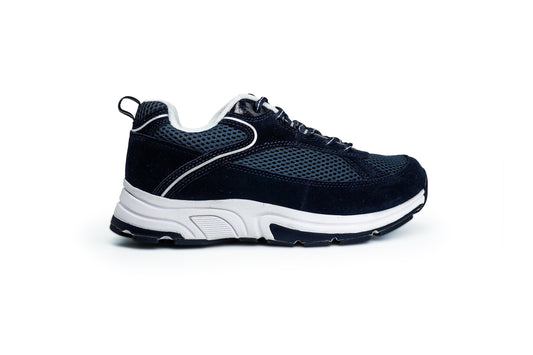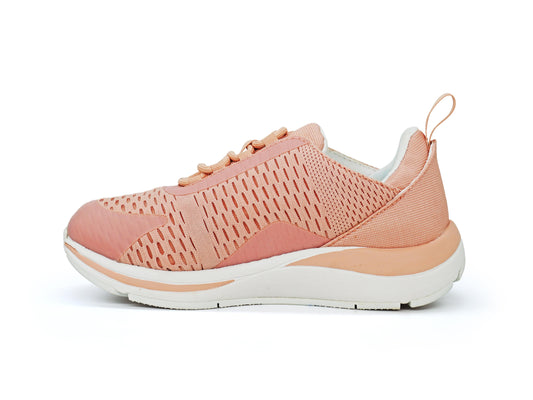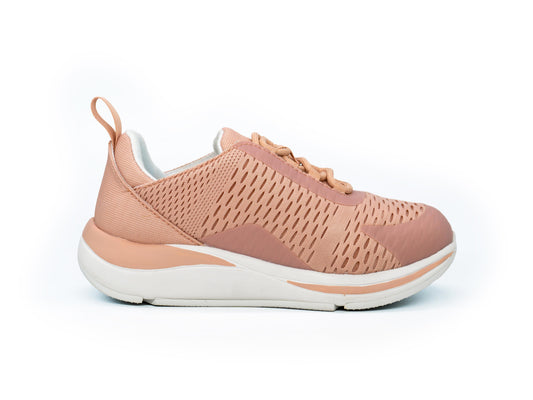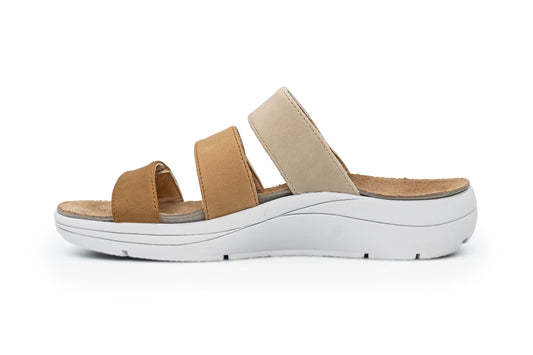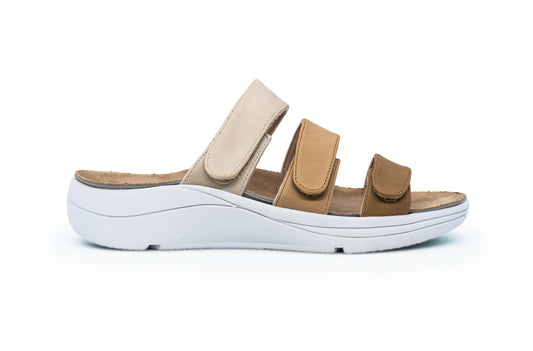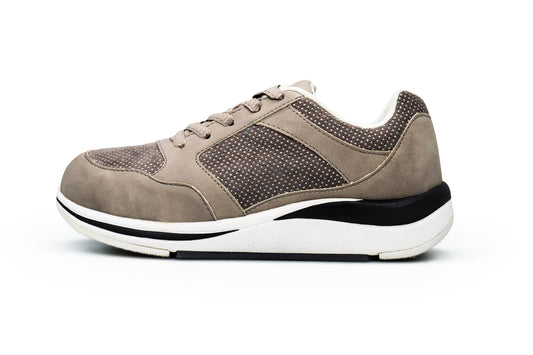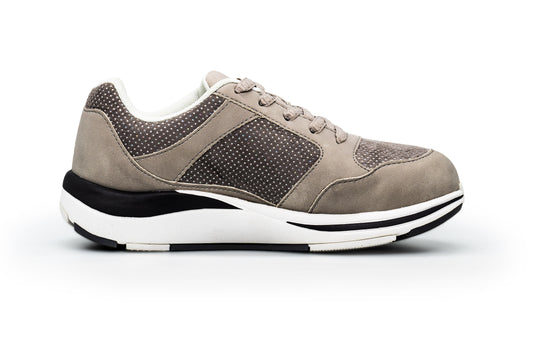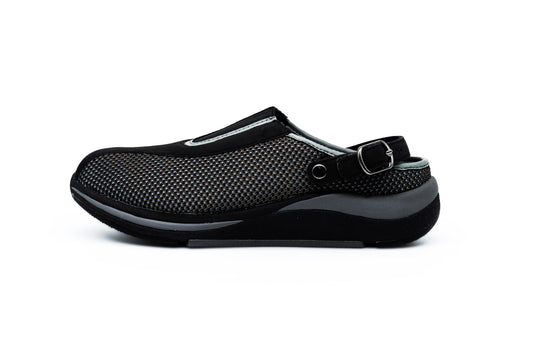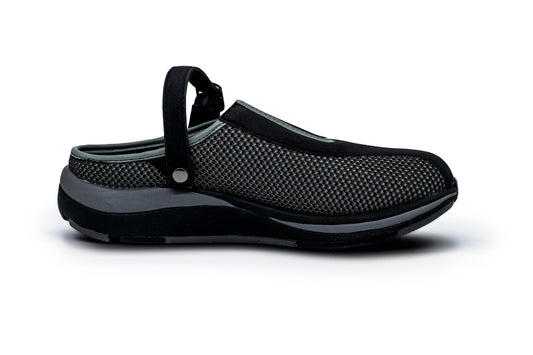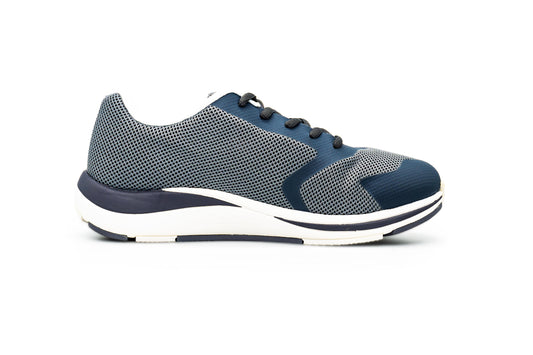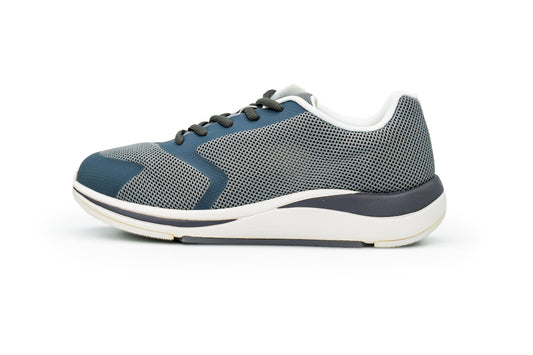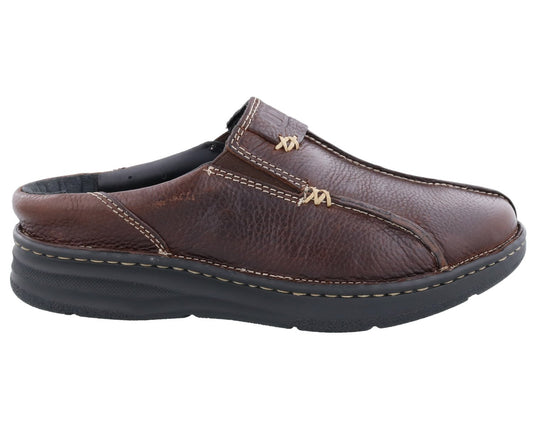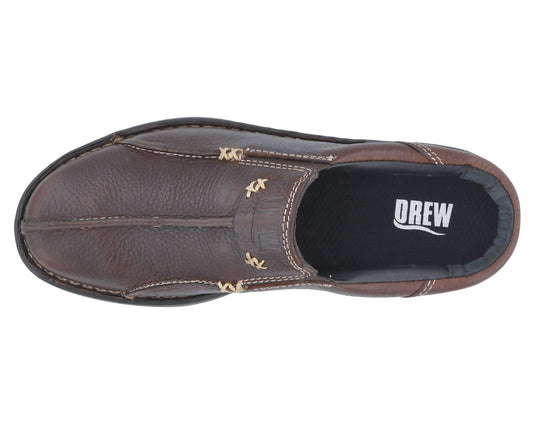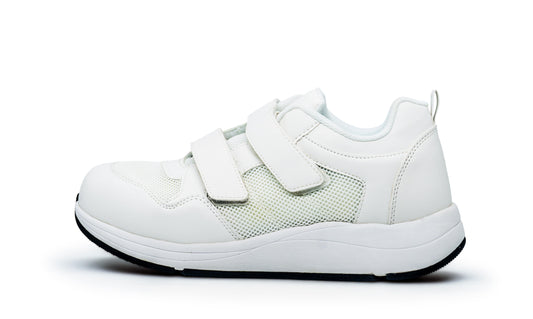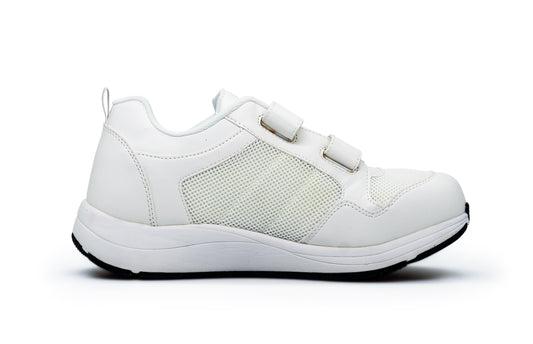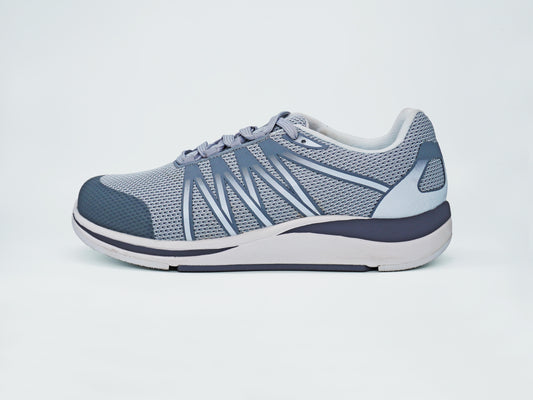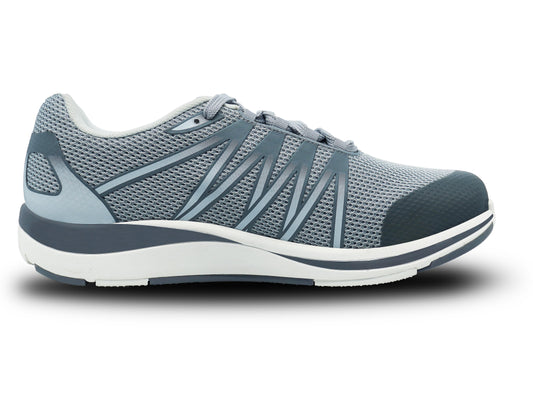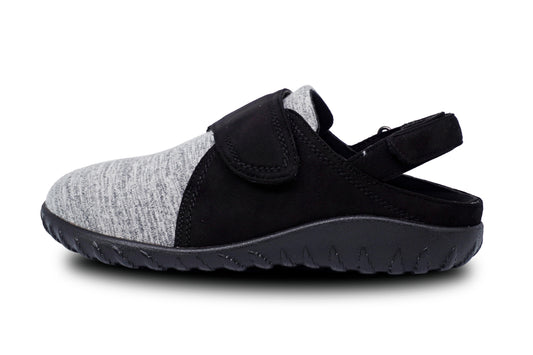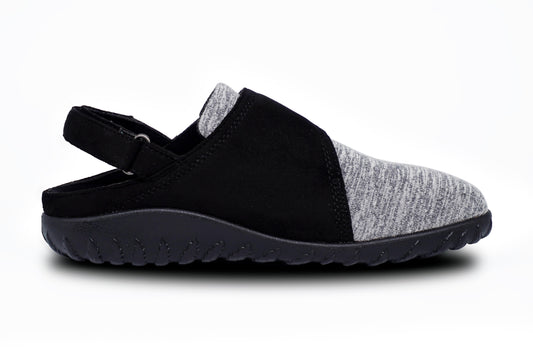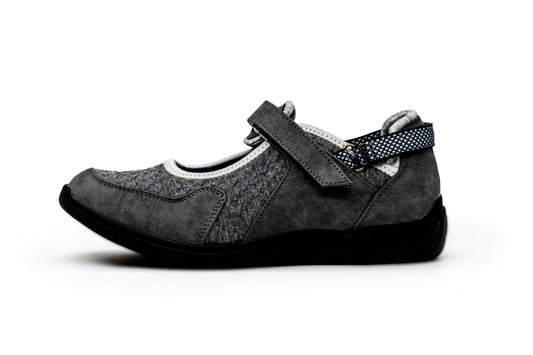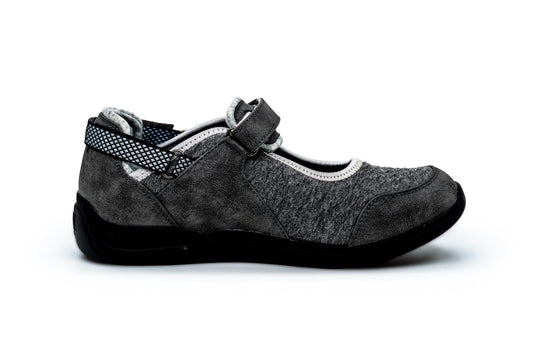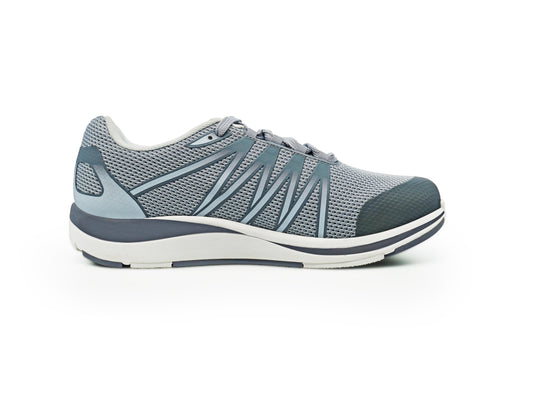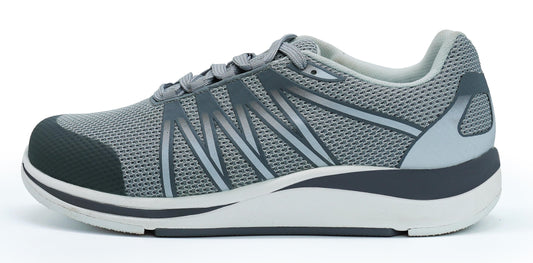-
Vendor: WOMENS
SPRINTER Diabetic & Orthopedic Athletic Shoe Rose - Womens - Rose Combo
The Sprinter women's lace-up sneaker by Drew only available exclusively at Diabeticshoe.in features our Walk Right Technology Insole and is engineered for protection and superior comfort. A slip-resistant outsole will keep you on your feet. The high rebound EVA midsole provides shock absorption to...- ₹ 11,695
₹ 12,995- ₹ 11,695
- Unit price
- / per
-
Rose Combo
-
Grey Mesh Combo
-
Vendor: WOMENS
CHIPPY Diabetic & Orthopedic Athletic Shoes - Womens - Grey Combo
Drew Chippy exclusively available at Diabetic Shoe India is our most popular casual shoes for women offers a great, new look for Drew. Chippy shoes are one of the industry's few walking shoes with double depth and two removable insoles that can accommodate prescribed...- ₹ 10,795
₹ 11,995- ₹ 10,795
- Unit price
- / per
-
Grey Combo
-
Vendor: MENS
AARON Diabetic & Orthopedic Athletic Shoes - Mens - Navy Suede/Mesh
Walk in confidence knowing Drew Aaron only available exclusive at DiabeticShoe.in offers the proprietary Plus Fitting System® with two removable insoles plus all the therapeutic benefits Drew is famous for. With shock-absorbing inserts, flared outsoles, firm heel counters and Drilex® linings to wick away...- ₹ 11,695
₹ 12,995- ₹ 11,695
- Unit price
- / per
-
Navy Suede/Mesh
-
Vendor: WOMENS
PURSUIT Slip-On Sneaker - Womens - Black Mesh Combo
Drew's Pursuit slip-on sneaker exclusively available at Diabetic & Orthopedic Shoe India for women is a multi-functional shoe designed with the utmost comfort in mind. Pursuit can be slipped on with ease and can be worn with or without the ankle strap. It's extremely...- ₹ 9,895
₹ 11,995- ₹ 9,895
- Unit price
- / per
-
Black Mesh Combo
-
Vendor: MENS
STABLE Diabetic & Orthopedic Walking Shoes - Mens - Grey Mesh
The name says it all. The Stable features our proprietary Drew with Walk Right Technology™ in a men's athletic sneaker/walking shoe with superior support and comfort. A slip-resistant outsole will keep you connected with the ground. The high rebound EVA midsole provides shock absorption...- ₹ 10,795
₹ 11,995- ₹ 10,795
- Unit price
- / per
-
Grey Mesh
-
Vendor: MENS
JACKSON Diabetic & Orthopedic Sandal - Mens - Brown Pebbled Leather
One step into this clog, and you'll feel like you're walking on clouds. Great-looking tumbled leathers make Drew® Jackson the most requested clog in the industry. available exclusive at DiabeticShoe.in These Drew men's shoes define quality, comfort, support and stability. Drew Jackson are fully...- ₹ 11,695
₹ 12,995- ₹ 11,695
- Unit price
- / per
-
Brown Pebbled Leather
-
Vendor: MENS
CONTEST Diabetic & Orthopedic Sneaker- Mens - White Combo
The Contest by Drew men's double hook and loop sneaker is engineered for superior comfort exclusively available to buy from Diabetic Shoe India. A slip-resistant outsole will keep you sure on your feet. The high rebound EVA midsole provides shock absorption to reduce foot...- ₹ 10,795
₹ 11,995- ₹ 10,795
- Unit price
- / per
-
White Combo
-
Vendor: MENS
PLAYER Diabetic & Orthopedic Athletic Shoes - Mens - Grey Mesh
The men's Player offers Drew with Walk Right Technology™ and is engineered for protection and superior comfort and support only avaiable to buy at Diabetic Shoe India. A slip-resistant outsole will keep you on your feet. The high rebound EVA midsole provides shock absorption...- ₹ 10,795
₹ 11,995- ₹ 10,795
- Unit price
- / per
-
Grey Mesh
-
Vendor: WOMENS
BREEZY Slipper Footwear - Womens - Black Microsuede/Stretch
Exclusive textures and comfortable design is a smash success in the womens Breezy slip-on by Barefoot Freedom® by Drew® only available exclusive at DiabeticShoe.in. Adjustable hook and loop closure at the heel and vamp allow for a customized fit. Stretch fabric along with a supportive,...- ₹ 9,995
₹ 10,995- ₹ 9,995
- Unit price
- / per
-
Black Microsuede/Stretch
-
Vendor: WOMENS
SAWYER Diabetic & Orthopedic Sandal - Womens - Blue Combo
Sawyer womens sandals by Drew® at DiabeticShoe.in combine an updated modern look with a hard-to-find removable insole. The removable Walk Right Technology™ footbed makes Sawyer one of the most comfortable women's sandals around! Featuring a lightweight outsole and three hook and loop adjustable straps,...- ₹ 8,995
₹ 10,995- ₹ 8,995
- Unit price
- / per
-
Blue Combo
-
Natural Combo
-
Vendor: WOMENS
BUTTERCUP Diabetic & Orthopedic Sandal - Womens - Grey Combo
The Drew® Buttercup available in India exclusively at DiabeticShoe.in is our best orthopedic shoe yet ! This popular women's shoe offers beautiful, detailed styling with the convenience and comfort of an adjustable hook and loop closure at the top of the foot with a detachable strap...- ₹ 11,695
₹ 12,995- ₹ 11,695
- Unit price
- / per
-
Grey Combo
-
Vendor: WOMENS
BALANCE Running Shoes - Womens - Grey Mesh
The Balance women's athletic shoe features our Walk Right Technology™ Insole and is engineered for protection and superior comfort. A slip-resistant outsole will keep you on your feet. The high rebound EVA midsole provides shock absorption to reduce foot and leg fatigue. Complete with...- ₹ 10,795
₹ 11,994- ₹ 10,795
- Unit price
- / per
-
Grey Mesh
Trending Now
Popular Products
Vendor:
MENS
AARON Diabetic & Orthopedic Athletic Shoes - Mens - Navy Suede/Mesh
Walk in confidence knowing Drew Aaron only available exclusive at DiabeticShoe.in offers the proprietary Plus Fitting System® with two removable insoles plus all the therapeutic benefits Drew is famous for. With shock-absorbing inserts, flared outsoles, firm heel counters and Drilex® linings to wick away...
- ₹ 11,695
₹ 12,995- ₹ 11,695
- Unit price
- / per
-
Navy Suede/Mesh
Vendor:
WOMENS
SPRINTER Diabetic & Orthopedic Athletic Shoe Rose - Womens - Rose Combo
The Sprinter women's lace-up sneaker by Drew only available exclusively at Diabeticshoe.in features our Walk Right Technology Insole and is engineered for protection and superior comfort. A slip-resistant outsole will keep you on your feet. The high rebound EVA midsole provides shock absorption to...
- ₹ 11,695
₹ 12,995- ₹ 11,695
- Unit price
- / per
-
Rose Combo
-
Grey Mesh Combo
Vendor:
WOMENS
SAWYER Diabetic & Orthopedic Sandal - Womens - Blue Combo
Sawyer womens sandals by Drew® at DiabeticShoe.in combine an updated modern look with a hard-to-find removable insole. The removable Walk Right Technology™ footbed makes Sawyer one of the most comfortable women's sandals around! Featuring a lightweight outsole and three hook and loop adjustable straps,...
- ₹ 8,995
₹ 10,995- ₹ 8,995
- Unit price
- / per
-
Blue Combo
-
Natural Combo
Plantar Fasciitis - HEEL PAIN
Plantar Fasciitis (which can lead to heel spurs and heel pain) is a persistent pain located on the bottom of the heel and the inside of the foot. The plantar fascia is a fibrous, tendon-like structure that extends the entire length of the bottom of the foot. During excessive activity, the plantar fascia can become irritated, inflamed and even tear. Improper shoe selection can cause the injury, including stiff-soled shoes that stretch the tendon, and over-worn shoes that allow the foot to pronate. Drew footwear has superior insoles that support the arch and reduce tension on the tendon. Each pair has extra room for orthotics, which are commonly prescribed to help alleviate the pain and tension of plantar fasciitis. Drew's extended medial stabilizers in the heel provide needed support and stability for this condition.
Key Features:
-
Arch Support: This is arguably the most important feature. Proper arch support helps to distribute pressure evenly across the foot, preventing the arch from collapsing and reducing overpronation, which can exacerbate pain.
-
Cushioning and Shock Absorption: Look for ample cushioning, particularly in the heel and forefoot. This helps absorb the impact of walking or running, which reduces pressure on the heel and the plantar fascia. However, be aware that excessive softness can lead to instability.
-
Heel-to-Toe Drop: A higher heel-to-toe drop (often 10mm or more) can be beneficial as it shifts some of the load from the heel to the forefoot, relieving pressure on the plantar fascia.
-
Stiff Heel Counter: A firm heel counter locks the heel in place, which reduces movement and provides stability, allowing the plantar fascia to work less.
-
Torsional Rigidity: The shoe should be resistant to twisting. A torsionally rigid platform prevents excessive twisting of the foot, which can put extra pressure on the plantar fascia.
-
Wide Toe Box: A spacious toe box allows the toes to move naturally and prevents crowding, which can contribute to discomfort.
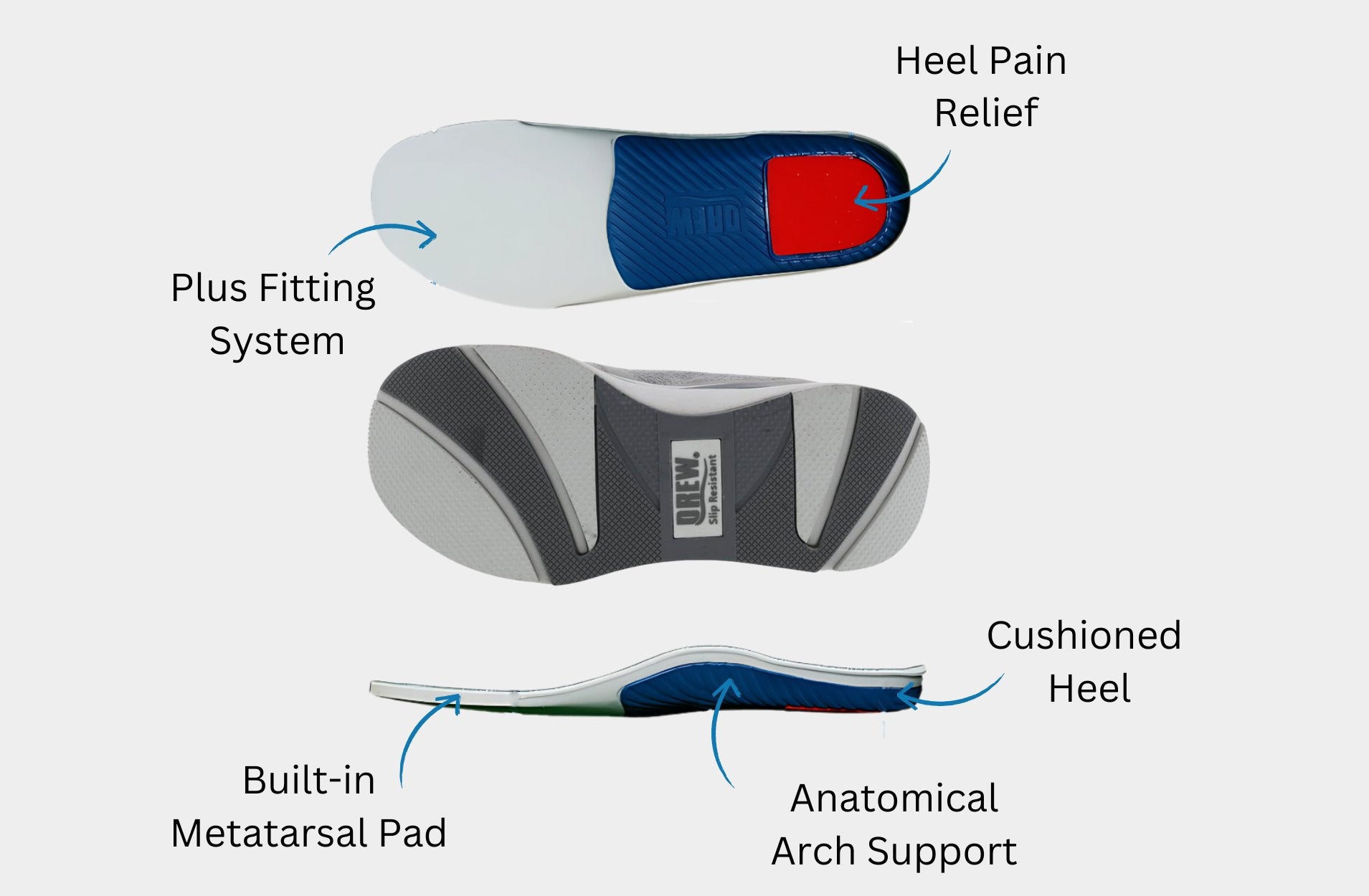
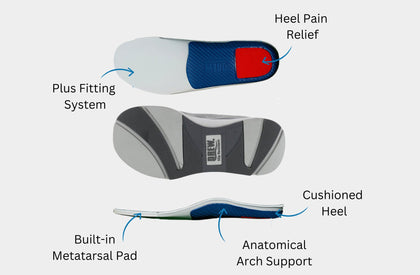
Sidebar
Why Choose Orthopedic & Diabetic Shoes?
Orthopedic & diabetic shoes combine soft, seamless interiors with supportive orthotic technology to protect sensitive feet from blisters, pressure, and friction. With added depth, cushioned soles, and a roomy fit, these shoes provide relief while helping to prevent foot conditions commonly associated with diabetes.
Key Features:
- Seam-Free, Padded Interiors: Each shoe is designed with a seamless lining and extra padding to prevent irritation and friction, making them ideal for individuals with sensitive feet or neuropathy.
- Orthotic Insoles with Arch Support: Built-in orthotic insoles provide gentle arch support and improve foot alignment, helping to alleviate pain from common foot issues like plantar fasciitis and flat feet.
- Lightweight, Shock-Absorbing Soles: The cushioned soles absorb impact with each step, reducing pressure on the feet, knees, and lower back. This feature is especially beneficial for individuals with diabetes, as it helps prevent undue stress on the feet.
- Wide Toe Box and Extra Depth: Designed with a spacious toe box, Orthopedic & diabetic shoes allow natural toe movement and accommodate swollen feet or foot deformities, providing a comfortable, pressure-free fit.
- Adjustable Fit Options: Many styles feature adjustable closures, such as Velcro straps or laces, allowing for a personalized fit that accommodates swelling and provides extra stability.
- Reinforced arch support: Insoles are designed to support the arch, maintain proper foot alignment, and relieve pressure on joints.
- Firm heel counter: A stiff, supportive back section prevents the heel from sliding around in the shoe, which adds stability and motion control.
- Durable construction: These shoes are built to be sturdy and provide long-lasting support to the foot's structure.
- Soft, non-binding materials: The shoe's uppers are made from soft, flexible, and often stretchy materials that conform to the foot's contours and prevent constriction, which is important for circulation
- Breathable materials: Fabrics like leather and mesh promote air circulation, keeping the feet dry and reducing the risk of fungal infections.
- Protective, non-skid sole: The sturdy outsole shields the foot from sharp objects, and the non-slip design reduces the risk of falls.
- Adjustable straps: Hook-and-loop (Velcro) straps or laces allow for easy adjustments to accommodate fluctuations in foot swelling throughout the day
Benefits of Orthopedic & Diabetic Shoes:
Both orthopedic and diabetic shoes are therapeutic footwear designed to protecy and support the feet, but they serve different primary purposes. Orthopedic shoes correct biomechanical foot issues, while diabetic shoes are specifically engineered to prevent complications in diabetic patients who are prone to foot injuries and ulcers.
- Enhanced Foot Protection: Soft, seamless interiors and cushioned support protect sensitive feet from blisters, pressure, and irritation, promoting better foot health.
- Pain Relief and Stability: Orthotic insoles and ergonomic design provide the support needed to alleviate pain and ensure stability, reducing the risk of slips and falls.
- Long-Lasting Comfort: With shock-absorbing materials and a comfortable, supportive fit, Orthopedic & diabetic shoes offer the all-day comfort you need to stay active and pain-free.
- Improve support and alignment: They feature reinforced arch support, firm heel counters, and cushioned insoles that help maintain proper alignment of the feet and ankles. This also helps with issues like flat feet and high arches.
- Reduce pain: Orthopedic footwear is effective at relieving foot pain caused by conditions like plantar fasciitis, heel spurs, bunions, and arthritis. The extra cushioning helps absorb shock and minimizes pressure on sensitive areas.
- Enhance mobility: By providing stability and support, these shoes make it easier and more comfortable to walk, stand, and move. This is especially beneficial for those with arthritis, injuries, or other conditions that affect gait.
- Accommodate foot deformities: Features like wide toe boxes reduce friction and pressure on bunions and hammertoes, preventing discomfort and the condition from worsening.
- Distribute pressure: The design ensures that weight is evenly distributed across the foot, which reduces stress on joints and other key areas.
- Improve overall posture: By promoting better foot and ankle alignment, orthopedic shoes can have a positive effect on your posture, which in turn can relieve pain in the knees, hips, and back.
- Prevent foot ulcers: Diabetes can cause nerve damage that reduces sensation in the feet. A minor cut or blister can go unnoticed and develop into an ulcer. Diabetic shoes have seamless interiors and soft, non-binding uppers to eliminate friction and pressure points that can lead to skin breakdown and ulcers.
- Protect against injury: Stiff toe boxes and durable construction shield feet from accidental bumps or impacts, which is crucial for those with reduced sensation who might not feel an injury.
- Enhance circulation: Designed with extra depth and wide toe boxes, diabetic shoes promote healthy blood flow by preventing constriction. The reduced pressure on the feet helps improve circulation, which is often poor in individuals with diabetes.
- Accommodate foot deformities and swelling: The roomy design provides space for common diabetes-related foot changes, such as swelling, bunions, and hammertoes. Adjustable closures can accommodate daily fluctuations in foot size.
- Reduce risk of amputation: By preventing and managing foot injuries and infections, proper therapeutic footwear is a critical tool for reducing the risk of amputation associated with severe diabetic foot complications.
- Ensure optimal foot health: Regular use of diabetic shoes, along with daily foot checks and hygiene, is a key part of a comprehensive foot care plan for diabetics, leading to enhanced mobility and independence.
Ideal for Everyday Activities and Long Hours
Orthopedic & diabetic shoes are crafted to support you through any daily activity, from work to casual outings:
- Home and Daily Wear: Perfect for relaxing or light walking, these shoes keep your feet cushioned and comfortable all day.
- Errands and Social Outings: With a stylish yet practical design, Orthopedic & diabetic shoes allow you to stay active and look great without compromising on foot health.
- Protect your feet with Orthoshoes diabetic shoes, designed to provide gentle, reliable support and comfort for sensitive feet. Discover footwear that’s as protective as it is comfortable.
Shop the collection today and step into comfort and peace of mind!
FAQs
What is plantar fasciitis?
Plantar fasciitis is an inflammation of the plantar fascia, a thick band of tissue on the sole of your foot. This ligament runs from your heel bone to your toes, supports the arch of your foot, and absorbs stress and pressure.
What are the symptoms?
Morning pain: The most common symptom is a sharp, stabbing pain in the heel with the first steps out of bed. The pain may subside with walking but often returns after long periods of rest.
Stiffness: The foot may feel stiff, especially after sitting for a while.
Arch and heel pain: You may feel an ache or burning sensation in the arch of your foot.
Swelling: Some people experience swelling around the heel.
Pain with activity: The pain can worsen after prolonged periods of standing, walking, or exercise.
What causes plantar fasciitis?
The condition is caused by excessive stress and strain on the plantar fascia. Common risk factors include:
Age: It is most common in middle-aged adults, but it can affect younger people as well.
Foot structure: Having flat feet or very high arches can unevenly distribute weight and stress on the fascia.
Occupation: Jobs that require long hours of standing or walking on hard surfaces, such as teachers or nurses, increase the risk.
Weight: Being overweight or obese puts extra pressure on the feet.
High-impact activities: Sports like running, dancing, or aerobic exercise can cause repetitive strain.
Tight muscles: Limited flexibility in the calf muscles and Achilles tendon adds stress to the plantar fascia.
Improper footwear: Shoes with inadequate arch support, thin soles, or those that are worn out can make the condition worse.
Is a heel spur the same as plantar fasciitis?
No, they are different conditions, but they can be related. A heel spur is a bony growth on the heel bone that can develop as a result of the ongoing stress and inflammation caused by plantar fasciitis. However, many people have heel spurs without any pain, and many people with plantar fasciitis do not have heel spurs.
How is plantar fasciitis treated?
Most cases can be managed with conservative, at-home treatments:
Rest: Reduce or modify activities that aggravate the pain.
Ice: Roll the bottom of your foot over a frozen water bottle for 15–20 minutes to reduce inflammation.
Stretching: Regularly stretch your plantar fascia and calf muscles. A doctor or physical therapist can recommend specific exercises.
Supportive footwear: Wear shoes with good arch support and cushioned heels. Avoid going barefoot on hard surfaces.
Orthotics: Over-the-counter or custom-made shoe inserts can help distribute pressure more evenly.
Night splints: Wearing a splint while sleeping can help keep the plantar fascia and Achilles tendon stretched, reducing morning pain.
Anti-inflammatory medication: Over-the-counter pain relievers like ibuprofen can help with pain and swelling.
Physical therapy: A physical therapist can guide you through a targeted exercise program.
When should a doctor be consulted?
Consult a doctor if:
Pain is severe or does not improve after a week of self-care.
Pain worsens despite rest, ice, and stretching.
Numbness, tingling, or a visible change in gait are also experienced.
Can plantar fasciitis be cured?
Yes, most cases of plantar fasciitis can be resolved completely. With consistent and correct treatment, many people recover within a few months, though some cases may take longer. Surgery is rarely needed and is typically reserved for severe, chronic cases that haven't responded to other treatments.
How is plantar fasciitis diagnosed?
Doctors can typically diagnose plantar fasciitis by discussing your symptoms and performing a physical examination of your foot. They may check for tenderness and limited ankle flexibility. Imaging tests like X-rays or MRIs are sometimes used to rule out other problems, such as stress fractures, but are not always necessary
Can plantar fasciitis heal on its own?
With proper rest and treatment, the condition often improves within several months, but it may take longer. The pain is unlikely to simply go away without treatment, and ignoring it can lead to chronic issues with your foot, leg, hip, and back.
Recently Viewed Products
- Choosing a selection results in a full page refresh.

